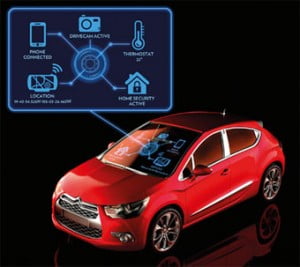

IBM has launched a cloud service that aims to harness the power of the Internet of Things (IoT) so that car makers can cut the costs of production, ownership and pollution.
The new IBM Cloud could help the likes of BMW and Mercedes to make better use of the mass of data created by all the intelligent sensors in a car and use this intelligence to make car drivers more efficient. The service aggregates data about the machines, the drivers and the passengers. IBM claims it could cut carbon emissions by helping cut fuel consumption through promoting better driving techniques, smarter route choices and sensible loading.
On the supplier side, the improved intelligence, says IBM, could help vehicle manufacturers to lower both the cost of production and ownership, through techniques such as predictive vehicle maintenance, real-time engine diagnostics and chassis stress analysis.
The IBM Internet of Things (IoT) for Automotive system is available on IBM Cloud’s SoftLayer infrastructure. IBM says it will analyse primary and secondary sources of intelligence. In addition to primary sources, such as geolocation data collected in the car, it will use external sources such as the car maker’s customer data and vehicle history. It will also use data from parking providers.
Automotive supplier Continental uses IBM MessageSight and IBM InfoSphere Streams, components of the IBM IoT for Automotive solution, to help manage complex data streams and apply analytics to its eHorizon system. This allows vehicle electronics to anticipate road conditions using digital mapping and crowd sourced data.
According to Telefonica’s 2013 Connected Car Industry Report, nine in ten new cars will be equipped with extensive connectivity services by 2020. IBM’s mission is to make sense of all the masses of big data and put it to good use, said IBM’s general manager for global automotive industry Dirk Wollschlaeger. “We have the potential to change how we interact with our vehicles,” said Wollschlaeger.
[“Source- businesscloudnews”]

